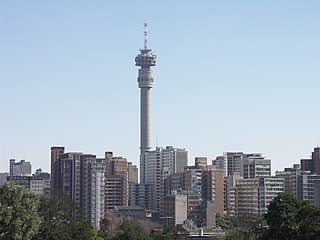
Hillbrow is an inner city residential neighbourhood of Johannesburg, Gauteng Province, South Africa. It is known for its high levels of population density, unemployment, poverty, prostitution and crime.
David Goldblatt HonFRPS was a South African photographer noted for his portrayal of South Africa during the period of apartheid. After apartheid had ended he concentrated more on the country's landscapes. What differentiates Goldblatt's body of work from those of other anti-apartheid artists is that he photographed issues that went beyond the violent events of apartheid and reflected the conditions that led up to them. His forms of protest have a subtlety that traditional documentary photographs may lack: "[M]y dispassion was an attitude in which I tried to avoid easy judgments. . . . This resulted in a photography that appeared to be disengaged and apolitical, but which was in fact the opposite." He has numerous publications to his name.
Saxonwold is an affluent suburb of Johannesburg, South Africa. It is situated in what was once the Sachsenwald Forest in the early 20th century. It is located in Region E of the City of Johannesburg Metropolitan Municipality.
Parktown is a wealthy suburb of Johannesburg, South Africa, the first suburb north of the inner city. It is affectionately known as one of the Parks, others including Parkview, Parkwood, Westcliff, Parktown North, Parkhurst and Forest Town. Parktown is one of Johannesburg's largest suburbs, neighbouring Hillbrow, Braamfontein and Milpark to the South; Berea and Houghton to the East; Killarney and Forest Town to the North, and Westcliff, Melville and Richmond to the West. Originally established by the Randlords in the 1890s, Parktown is now home to many businesses, hospitals, schools, churches and restaurants, whilst still maintaining quiet residential areas. It is also home to three of the five campuses of the University of the Witwatersrand including the education campus, medical school and Wits Business School. It is located in Region F of the City of Johannesburg Metropolitan Municipality.
Brett Murray is a South African artist mostly known for his steel and mixed media wall sculptures. He was born in Pretoria, South Africa. Murray has a master's degree in fine art from the Michaelis School of Fine Art, 1989. Referred to by critic Brenda Atkinson as "the dark prince of South African pop (art)", Murray is one of the country's most popular artists, often using easily recognisable media images with the addition of a subversive and bitterly funny twist. Murray's work addresses the wars of the cultures, the clash between Afrocentrism and Eurocentrism, the old and the new South Africas. "With my work I hope to critically entertain. Through satirical and tragic reflections on South Africa, I hope to shift people's perspectives and change people's minds, indulgent, arrogant and pretentious as this might sound," he says. More recently, his work has explored his own personal experiences and identity. Murray was also the founder of the sculpture department at Stellenbosch University.
The term Holocaust museum may refer to:
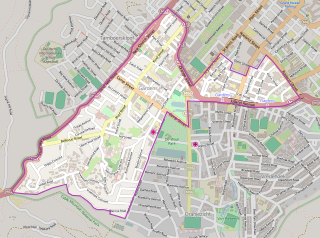
Gardens is an affluent inner-city suburb of Cape Town located just to the south of the city centre located in the higher elevations of the "City Bowl" and directly beneath Table Mountain and Lion's Head. It is home to several national museums such as Iziko South African National Gallery and the Iziko South African Museum. The University of Cape Town also houses its Fine Arts department in the suburb, at Michaelis School of Fine Art. Company's Garden, South Africa's oldest garden, a public park and heritage site is a focal point of the suburb. The area is also home to the oldest synagogue in Southern Africa, the Old Shul and its successor, the Gardens Shul, "The Mother Synagogue of South Africa."
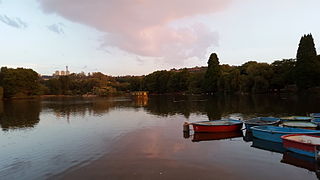
Zoo Lake is a popular lake and public park in Johannesburg, South Africa. It is part of the Hermann Eckstein Park and is opposite the Johannesburg Zoo. The Zoo Lake consists of two dams, an upper feeder dam, and a larger lower dam, both constructed in natural marshland watered by the Parktown Spruit.

Zanele Muholi is a South African artist and visual activist working in photography, video, and installation. Muholi's work focuses on race, gender and sexuality with a body of work that dates back to the early 2000s, documenting and celebrating the lives of South Africa's Black lesbian, gay, transgender, and intersex communities. Muholi is non-binary and uses they/them pronouns, explaining that "I'm just human".
Pieter Hugo is a South African photographer who primarily works in portraiture. He lives in Cape Town.

The Cape Town Holocaust & Genocide Centre began as Africa's first Holocaust centre founded in 1999. It has sister Centres in Johannesburg and Durban, and together they form part of the association, the South African Holocaust & Genocide Foundation (SAHGF). The SAHGF determines the educational and philosophical direction of the centre. It also conducts teacher training and is the only accredited service-provider for in-service training in Holocaust education in the country. It has trained over 5,000 teachers
Mary Sibande is a South African artist based in Johannesburg. Her art consists of sculptures, paintings, photography, and design. Sibande uses these mediums and techniques to help depict the human form and explore the construction of identity in a postcolonial South African context. In addition, Sibande focuses on using her work to show her personal experiences through Apartheid. Her art also attempts to critique stereotypical depictions of women, particularly black women.
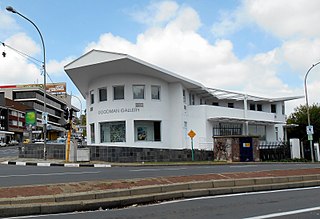
Goodman Gallery is an art gallery founded in Johannesburg, South Africa by Linda Givon in 1966. The gallery operates spaces in Johannesburg, Cape Town, and London. It represents both established and emerging artists who are regarded as having helped shape the landscape of contemporary art in Southern Africa.
The Jacob Gitlin Library in Cape Town, South Africa is an archive of information on Judaism, Jewish culture and history, and the nation of Israel. It was founded under the auspices of the South African Zionist Federation in 1959.
The Forest Town raid was a 1966 police raid that targeted LGBT people in Forest Town, Gauteng. The raid led to proposed anti-homosexuality legislation in South Africa. It also helped coalesce the queer community in South Africa.
Michele Bruno (1941-2016) was a South African drag queen and hairdresser. Bruno lived in Johannesburg and came to perform drag in the 1960s. He was the first Miss Gay South Africa in 1969.

The South African Jewish Museum is a museum of South African Jewish life, history and identity. The museum is situated in the downtown neighbourhood of Gardens in Cape Town. It is located in the grounds of Gardens Shul, and is in the same complex as the Cape Town Holocaust & Genocide Centre and the Gardens Jewish Community Centre. It is also close to the Iziko South African National Gallery and Houses of Parliament. The museum was founded by the late philanthropist, Mendel Kaplan. It documents the community's historical roots in Lithuania and elsewhere. Thereon it documents the role of South African Jewry in South African society and their contributions to a number of diverse fields.

The Johannesburg Holocaust and Genocide Centre (JHGC) is a Holocaust and genocide centre situated in Forest Town in Johannesburg. The building fronts Jan Smuts Avenue, a major road in the city. The centre opened in its permanent purpose-built site in 2019, having operated from a temporary site since 2008.
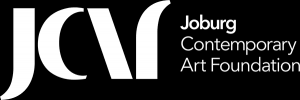
The Joburg Contemporary Art Foundation (JCAF) is a contemporary art gallery in Forest Town in Johannesburg. It is situated close to Johannesburg Zoo and the Johannesburg Holocaust and Genocide Centre. It opened in 2020 and is housed in a heritage site that underwent an extensive renovation to meet the needs of the foundation. The foundation focuses on exhibiting art and artists from the Global South.









